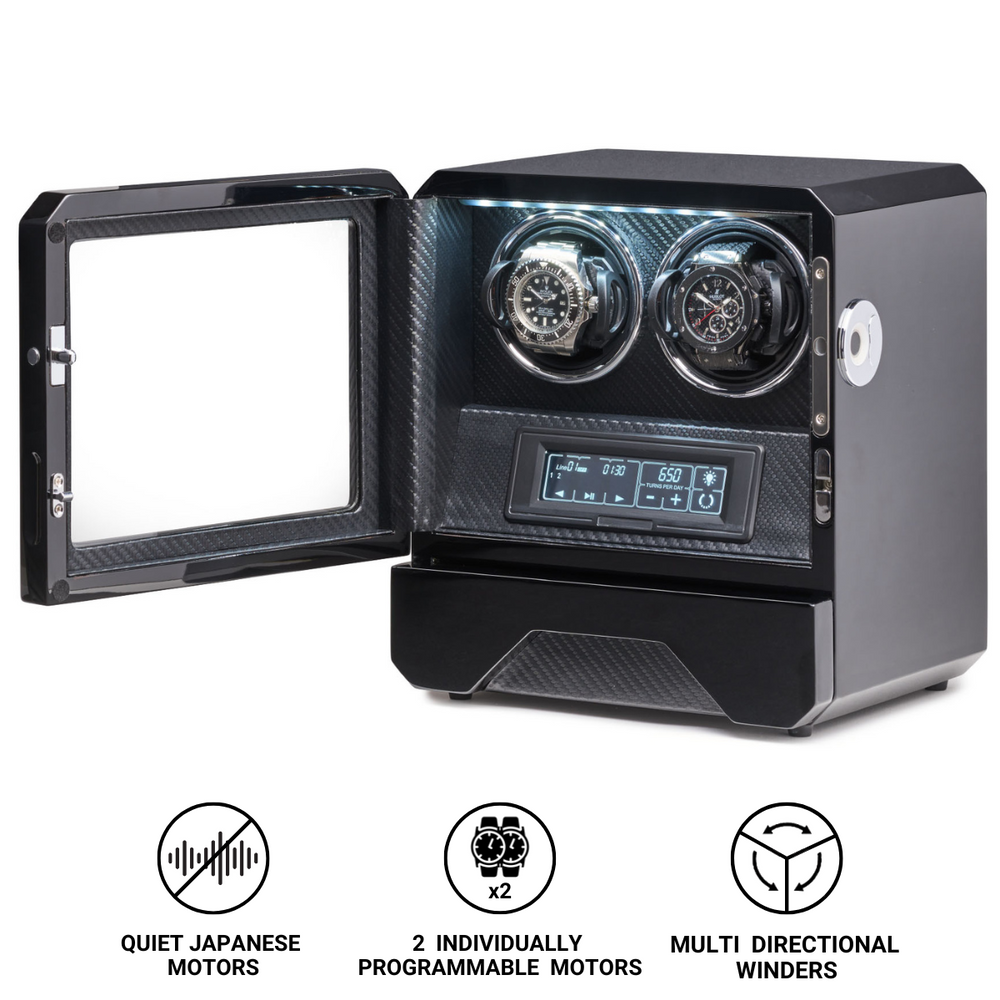What is Field Watch?
The field watch occupies a unique and honoured position in the history of horology. It is the embodiment of functionality, simplicity, and reliability, conceived in times of conflict and perfected in times of peace. Originally designed for soldiers who needed dependable timekeeping on the battlefield, the field watch has evolved into a timeless everyday companion. Its aesthetic is rooted in purpose, yet its appeal extends far beyond the military, influencing generations of watchmakers and enthusiasts.
While luxury watches often celebrate technical complexity or ornate design, the field watch stands for restraint and efficiency. Every element, from the dial layout to the case construction, serves a clear purpose. Its enduring popularity lies in its honest expression of what a watch is meant to be: a precise and reliable instrument.
Origins of the Field Watch
The story of the field watch begins in the early 20th century, during an era when wristwatches were still regarded as feminine accessories. Men preferred pocket watches, but as warfare became increasingly mobile and mechanised, soldiers needed a more practical way to keep track of time.
During the First World War, officers began fitting pocket watches with leather straps to wear on the wrist, allowing them to coordinate attacks, synchronise troop movements, and manage operations without fumbling for a watch in their pocket. These makeshift adaptations soon evolved into purpose-built wristwatches designed specifically for military use.
The earliest military wristwatches were defined by their legibility and robustness. They featured black dials with luminous white numerals and hands, protected by shatter-resistant crystals. Cases were compact and made of steel or nickel to withstand harsh conditions. Accuracy was essential, as even small timing errors could have fatal consequences on the battlefield.
By the Second World War, the field watch had become a standard issue for soldiers in many armies. Each nation developed its own specifications. The British Army’s “WWW” watches, known collectively as the “Dirty Dozen,” the American A-11, and the German Beobachtungsuhren (B-Uhr) each reflected the same underlying philosophy: clarity, durability, and precision under extreme conditions.
Design Characteristics of the Field Watch
The defining features of a field watch are rooted in its military origins. Its design prioritises utility above all else, resulting in a set of enduring characteristics that have changed little over the past century.
-
Dial Design and Legibility
The dial of a field watch is its most recognisable feature. It typically has a matte black or dark background with large, white Arabic numerals for maximum contrast. The layout is uncluttered, often including a 24-hour inner track for military time. Luminous paint on the numerals and hands ensures readability in low light. The hands themselves are usually of the syringe or cathedral type, designed to be bold and easy to distinguish at a glance. -
Case and Construction
Field watches are built to endure. The cases are compact, generally between 36 and 40 millimetres in diameter, allowing them to sit comfortably under sleeves and resist impacts. Stainless steel or titanium is the material of choice, providing a balance of strength and corrosion resistance. Many models also include screw-down casebacks and crowns to improve water resistance and prevent dust ingress. -
Movement
Traditionally, field watches were equipped with manual-wind mechanical movements, chosen for their reliability and ease of maintenance in remote conditions. Modern versions may feature automatic or quartz calibres, but the emphasis remains on robustness and accuracy. -
Strap
Functionality extends to the strap, which was historically made of canvas, leather, or nylon. The NATO strap, first introduced by the British Ministry of Defence in 1973, has become synonymous with field watches thanks to its durability and easy replacement in the field.
Every element of the design serves a purpose, reinforcing the ethos that form follows function.
The Military Heritage of Field Watches
The field watch was not designed as a fashion accessory but as an essential tool for survival. During wartime, precision timing could determine success or failure in battle. Military-issued watches were built to strict specifications, tested for shock resistance, waterproofing, and accuracy.
The American A-11, often referred to as “the watch that won the war,” was one of the most iconic field watches of the Second World War. Produced by Bulova, Elgin, and Waltham, it featured a black dial, white numerals, and a hacking seconds function that allowed soldiers to synchronise watches to the second.
In Britain, the Ministry of Defence commissioned twelve manufacturers to produce timepieces meeting the “WWW” standard in 1945. The resulting “Dirty Dozen” watches, made by brands such as Longines, Omega, IWC, and Jaeger-LeCoultre, became legendary for their consistency and quality.
These watches were not only instruments of war but also symbols of precision manufacturing. Their influence shaped post-war civilian watch design, setting a benchmark for durability and legibility that continues to define the field watch genre today.
The Evolution of the Field Watch in Civilian Life
After the wars ended, soldiers returning home often continued to wear their military-issued watches. These timepieces, once tools of survival, became part of everyday life. Their practicality and understated style resonated with civilians seeking reliability and simplicity in a world rebuilding from conflict.
Watch manufacturers recognised the enduring appeal of the field watch and began producing civilian models inspired by military designs. Brands such as Hamilton, Marathon, and Benrus carried forward the legacy of the American A-11, while Swiss companies like Longines and IWC adapted their wartime expertise into peacetime collections.
By the mid-20th century, the field watch had evolved into an essential category of tool watch. It appealed not only to veterans but also to explorers, engineers, and anyone who valued resilience over refinement. Its influence can be seen in modern outdoor and adventure watches, which maintain the same principles of clarity and robustness.
In recent decades, the field watch has also gained renewed appreciation among collectors and enthusiasts. Its minimalist design, historical authenticity, and practical proportions stand in contrast to the extravagance of many contemporary luxury watches.
Iconic Field Watch Models
Several models have become emblematic of the field watch tradition, each representing a different chapter in its history.
-
Hamilton Khaki Field
Arguably the most famous modern field watch, the Hamilton Khaki Field draws direct inspiration from the brand’s military watches of the 1940s. It features a clean dial, durable construction, and a reliable mechanical or quartz movement. Its versatility and affordability have made it a favourite among enthusiasts and newcomers alike. -
Marathon General Purpose Mechanical
Designed to meet strict military specifications, this Canadian-made field watch continues the utilitarian ethos of the original government-issued designs. Its tritium illumination, robust case, and precise movement make it a true descendant of the classic field watches used by NATO forces. -
Longines Heritage Military
Longines has revisited its rich military history with a line of field-inspired watches that pay homage to its 20th-century designs. These models capture the vintage aesthetic while incorporating modern materials and movements. -
CWC G10
Issued to the British military from the late 1970s onwards, the CWC G10 embodies the simplicity and reliability that define the field watch. Its quartz movement ensures precision, and its rugged design has made it a lasting symbol of modern military horology.
These watches demonstrate the enduring appeal of the field watch concept. Whether modern or vintage, mechanical or quartz, they all share a lineage that values reliability and clarity above decoration.
The Appeal of the Field Watch Today
In a market dominated by divers, chronographs, and luxury sports watches, the field watch occupies a distinctive niche. Its charm lies in its restraint. It is a watch for those who appreciate substance over spectacle, for whom authenticity and practicality are more important than opulence.
Modern field watches have found an audience among collectors who admire their historical significance and timeless design. They are also popular with adventurers, outdoor enthusiasts, and professionals who value dependable tools. Their simple dials, comfortable proportions, and durable construction make them ideal for daily wear.
Moreover, the resurgence of interest in vintage aesthetics has further elevated the status of the field watch. Its utilitarian beauty and connection to history evoke a sense of nostalgia and respect for mechanical craftsmanship.
Design Principles That Stand the Test of Time
The reason field watches remain relevant today is that their design principles are timeless. They embody the purest ideals of horology: precision, reliability, and clarity. These qualities transcend fashion trends and technological shifts.
The field watch teaches a valuable lesson about the relationship between form and function. Its beauty lies in purpose, its elegance in restraint. It is a reminder that true luxury is not defined by excess but by enduring quality.
From a practical standpoint, the field watch’s simplicity also makes it versatile. It pairs easily with casual attire, outdoor gear, or even formal clothing, proving that utility and style need not be opposites.
Conclusion
The field watch is more than a relic of military history; it is a living tradition that continues to influence modern horology. Its origins on the battlefield gave rise to principles that define the very essence of functional design. Every detail, from the high-contrast dial to the rugged case, reflects a legacy of precision and endurance.
In an age of technological abundance, the field watch stands as a reminder of simplicity’s power. It represents a time when watches were not luxury objects but essential instruments of survival and coordination. Yet, its appeal endures precisely because of that authenticity.
To wear a field watch is to carry a piece of history on the wrist, a connection to the soldiers, explorers, and craftsmen who shaped its identity. It is a celebration of function, clarity, and timeless design—a watch that, in its quiet way, continues to tell the story of human resilience and ingenuity.









